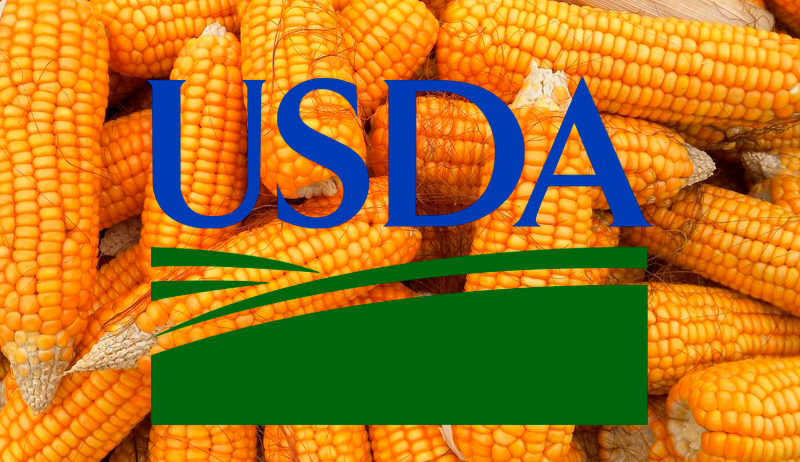USDA to increase corn stocks from the last business year

One of the few reports USDA released last week, before the shutdown, was the quarterly stocks report. This report did not offer significant positive data for corn prices, as it increased the 2024/25 business year’s stocks by almost five mln tons, which will be the beginning stocks for the 2025/26 business year. This could push new-crop stocks to their highest level in forty years. Of course, the discussion about the USDA’s yield continues, and private companies continue to seek a reduction in this potential as a factor in balancing the corn surplus in the 2025/26 cycle.
The USDA’s routine reports have been suspended since the first day of the month. Thus, the last recent data were related to the harvest and weekly shipments. The corn harvest will still give preference to soybeans and accelerate at a faster pace from late October, especially due to the high production levels. As of last week, 18% had been reaped, with no yield reports significantly lower than USDA has forecast. However, adjustments will naturally occur until January, depending on the harvest progress.
Weekly shipments reported 1.5 mln tons, which, within the annual projection, is in line with the expected pace. With no further news, the market awaited the quarterly inventory report on the 30th. This report yielded a carryover position of 38.9 mln tons, compared to the 33.6 mln tons expected by the USDA in its supply and demand framework. Therefore, the carryover position from the 2024/25 to 2025/26 business year was close to 5 mln tons higher than expected, and significantly higher than market expectations.
The new crop stock, 2025/26, will naturally be adjusted upward, as there is little room for new sharp increases in domestic demand in the United States, let alone in exports. Could some downward yield adjustment curb production numbers and inventory growth? With only 18% reaped, we do not believe USDA will make major cuts or increases in the next report. Using simple math, without changes in production and demand, the new crop stocks should jump to 58.8 mln tons, the highest in at least forty years.
The October supply and demand report, like other routine government information, has no new release date due to the federal government shutdown. Therefore, until the report is released, the market will rely on private information. At this point, prices on the Chicago Board of Trade were down this week, reflecting the larger position of stocks. However, due to private yield information, which barely changes the domestic oversupply scenario, prices have returned to over USD 4.20/bushel. Given the current supply profile, prices below USD 4.00/bushel should be considered a normal curve going forward.
There has been no sequence of market information that could sustain rising prices amid the largest harvest in US history. Neither oil, wheat, nor the dollar have been factors sending prices higher on the Chicago Board of Trade so far. The only issue seems to be the desire or caution of funds and financial institutions that prices will decline rapidly as the harvest progresses. Therefore, specific information and fund movements end up curbing this natural and fundamental adjustment. This, despite the short position on the exchange having grown to 900,000 contracts last week. Something strange is sustaining the CBOT at this moment.
Some information always generates short-term price volatility. Last week, the initial information was that China would not purchase soybeans and other agricultural products from the United States. However, shortly thereafter, information emerged that a new round of negotiations is underway this October, with soybeans as the focal point. Soybeans, therefore, created their natural volatility due to the information, but this does not change the current situation for corn. Furthermore, the information that the government will assist local producers in the face of the trade war signals security for local agricultural income, but it does not change the supply and demand situation, let alone the situation for corn.
The point is that China’s absence from purchasing at least 15 mln tons of US soybeans could affect local planting decisions for the 2026 crop. Will there be an even smaller soybean planting? A new, even larger area for corn? China’s presence in soybean purchases is also important for corn.
Argentina is now awaiting exchange rate volatility with the regional elections to determine a new sales stance. Registrations and exports have stagnated at 24.5 mln tons, and local producers are now awaiting currency volatility from the elections to determine whether sales will increase.
For almost 30 years of expertise in the agri markets, UkrAgroConsult has accumulated an extensive database, which became the basis of the platform AgriSupp.
It is a multi-functional online platform with market intelligence for grains and oilseeds that enables to get access to daily operational information on the Black Sea & Danube markets, analytical reports, historical data.
You are welcome to get a 7-day free demo access!!!
Read also
Ukraine has introduced a mechanism to control duty-free exports of soybeans and ra...
Algeria purchased a large batch of wheat
AgriSupp Data Constructor – create personalized subscription package!
Bulgaria oilseeds: Rapeseed steps up, sunflower seed crushing
Seasonal pattern has broken: Ukraine’s wheat prices aren’t rising as they should
Write to us
Our manager will contact you soon



